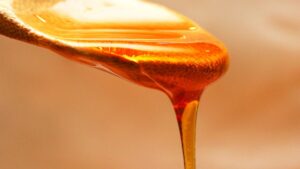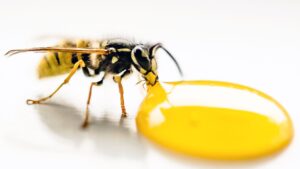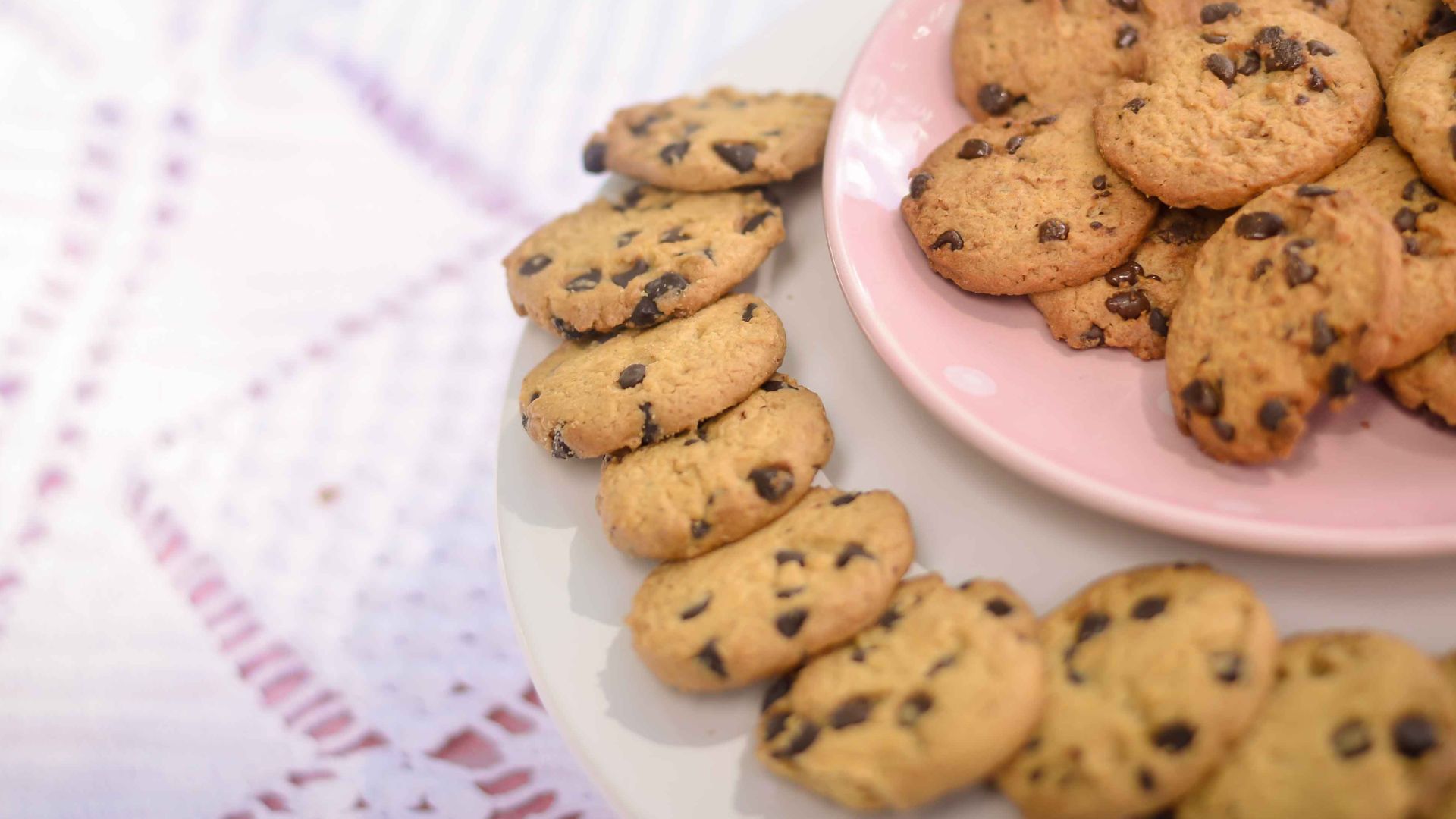Table of Contents
ToggleWhat is Sweet Honey (SH)?
Sweet Honey is a natural sweetener made by bees from the nectar of flowers. It has been used for thousands of years not only for its sweetness but also for its unique flavor and health benefits. The honey you see in your kitchen is typically filtered and sometimes pasteurized, which helps to maintain its sweetness and extends its shelf life. == >> Check out the right cookies Sweet Honey, tools and ingredients that you need here

The Role of Sweet Honey in Cookie Making
1. Sweetness and Flavor
Honey is a fantastic alternative to granulated sugar. It adds a rich, floral sweetness that you just can’t get from regular sugar. This unique flavor can elevate your cookies, making them stand out with a touch of sophistication. Depending on the type of honey you use (clover, wildflower, etc.), the flavor of your cookies can vary.== >> Check out the right cookies Sweet Honey, tools and ingredients that you need here
2. Moisture and Texture
One of the standout qualities of honey is its moisture content. Unlike granulated sugar, honey is a liquid, which means it helps to keep cookies moist and chewy. This is especially beneficial in recipes where a soft, gooey texture is desired. Honey can also contribute to a slight crispiness around the edges while keeping the center nice and tender.
3. Browning
Honey caramelizes differently than sugar, which affects the color and texture of your cookies. When you bake with honey, you might notice a deeper golden-brown hue. This happens because honey contains both fructose and glucose, which help in the Maillard reaction a process that gives baked goods their golden-brown color and complex flavors.== >> Check out the right cookies Sweet Honey, tools and ingredients that you need here

4. Binding Agent
Honey acts as a natural binding agent, helping to hold ingredients together. This is particularly useful in cookie recipes where you want to ensure that all components stick together well without falling apart. It helps in achieving a uniform texture and consistency in the dough.
5. Health Benefits
While not a health food per se, honey does come with some natural benefits. It contains trace amounts of vitamins, minerals, and antioxidants, which are absent in refined sugars. This doesn’t mean you should start using honey as a health supplement, but it’s a slightly healthier option compared to white sugar.== >> Check out the right cookies Sweet Honey, tools and ingredients that you need here

Tips for Using Sweet Honey in Cookies
Adjusting Recipes
When substituting honey for sugar in cookie recipes, you’ll need to make some adjustments. Generally, you can replace one cup of sugar with ¾ cup of honey. Also, reduce the liquid in the recipe by about ¼ cup since honey adds moisture.
Watch the Baking Time
Cookies made with honey may bake faster than those made with sugar. Keep an eye on them in the oven to avoid over-browning. It might be a good idea to start checking for doneness a few minutes before the recipe’s suggested time.== >> Check out the right cookies Sweet Honey, tools and ingredients that you need here
Use Fresh Honey
For the best results, use fresh honey. Over time, honey can crystallize and lose some of its flavor. Make sure your honey is smooth and liquid before using it in your cookie recipes.
Incorporating Sweet Honey into your cookie recipes can open up a world of new flavors and textures. From its ability to sweeten and add depth to its role in improving moisture and texture, honey is a versatile ingredient that deserves a spot in your baking repertoire. Whether you’re baking a batch of classic chocolate chip cookies or experimenting with new flavors, honey can enhance your creations in delightful ways.== >> Check out the right cookies Sweet Honey, tools and ingredients that you need here
Examples of Using Sweet Honey in Cookie Recipes
To give you a better idea of how Sweet Honey can be used in cookie making, let’s look at some specific examples. These examples will show you how honey can be a game-changer in your baking routine.
1. Honey Oatmeal Cookies
Honey works beautifully in oatmeal cookies, where it enhances both flavor and texture.
- Ingredients: Old-fashioned oats, whole wheat flour, honey, brown sugar, butter, eggs, cinnamon, baking soda, and a pinch of salt.
- How Honey Helps: Honey adds a natural sweetness and helps keep the cookies chewy. Its moisture content complements the oats, creating a tender yet hearty cookie. The slight floral notes of honey can add a subtle complexity to the flavor profile.== >> Check out the right cookies Sweet Honey, tools and ingredients that you need here
2. Honey Ginger Cookies
Ginger cookies are a classic, and honey can give them a unique twist.
- Ingredients: All-purpose flour, honey, ground ginger, cinnamon, cloves, baking powder, salt, butter, and egg.
- How Honey Helps: In these cookies, honey not only sweetens but also contributes to a lovely caramelization. The combination of spices with honey creates a warm, comforting flavor. Honey’s moisture ensures the cookies remain soft and don’t dry out.
3. Honey Almond Cookies
For a nutty twist, try honey almond cookies.
- Ingredients: Almond flour, honey, egg whites, sliced almonds, vanilla extract, and a pinch of salt.
- How Honey Helps: Honey binds the almond flour and egg whites together, creating a smooth dough. It also adds a subtle sweetness that complements the nutty flavor of the almonds. The result is a delicate, crunchy cookie that’s perfect with tea or coffee.== >> Check out the right cookies Sweet Honey, tools and ingredients that you need here
4. Honey Chocolate Chip Cookies
If you’re a fan of classic chocolate chip cookies, honey can add a new dimension.
- Ingredients: All-purpose flour, honey, brown sugar, butter, eggs, vanilla extract, chocolate chips, baking soda, and salt.
- How Honey Helps: Honey’s ability to retain moisture ensures these cookies are chewy and soft. The honey’s subtle flavor can slightly enhance the richness of the chocolate chips, giving the cookies a more complex taste.
5. Honey Shortbread Cookies
For a buttery and slightly sweet treat, honey can be a great addition to shortbread.
- Ingredients: All-purpose flour, honey, butter, sugar, and a pinch of salt.
- How Honey Helps: In shortbread cookies, honey adds a smooth sweetness and makes the texture a bit more tender. The honey’s caramel notes meld perfectly with the buttery flavor, creating a melt-in-your-mouth experience.== >> Check out the right cookies Sweet Honey, tools and ingredients that you need here
Tips for Experimenting with Honey in Cookie Recipes
Adjust Sweetness Levels
Since honey is sweeter than granulated sugar, you might want to reduce the amount of other sweeteners in your recipe. Start by substituting a smaller amount of honey and adjust according to taste.
Consider Honey Varieties
Different types of honey can bring unique flavors to your cookies. For example, buckwheat honey has a stronger, more robust flavor, while clover honey is milder and sweeter. Experiment with different varieties to find the one that best complements your recipe.
Pair with Other Ingredients
Honey pairs well with a variety of ingredients. For instance, combining honey with spices like cinnamon or nutmeg can create a warm, inviting flavor. Adding nuts or dried fruits can also enhance the texture and taste of your honey-infused cookies.== >> Check out the right cookies Sweet Honey, tools and ingredients that you need here
Drilling Deeper: Honey vs. Sugar in Cookie Making
When it comes to baking cookies, choosing the right sweetener can make a significant difference. Let’s delve into a comparison of Sweet Honey and granulated sugar, examining how each impacts your cookie recipes. This will help you understand which sweetener might be best suited for your baking needs.
1. Sweetness and Flavor
- Honey: Honey is generally sweeter than granulated sugar. Its unique flavor varies based on its source, such as clover, wildflower, or buckwheat. This can introduce a subtle, complex taste to your cookies, enhancing their flavor profile. The natural floral notes of honey can complement or contrast with other ingredients, depending on the recipe.
- Granulated Sugar: Granulated sugar has a pure, neutral sweetness that doesn’t alter the flavor of cookies much. This is ideal if you want a straightforward sweet taste without additional flavor undertones. It provides a consistent level of sweetness but lacks the depth and variety of flavors that honey offers.
2. Moisture and Texture
- Honey: Honey is a liquid, which adds moisture to cookie dough. This can result in cookies that are chewier and softer. The moisture from honey helps to retain softness and can prevent cookies from becoming too dry or crumbly. Additionally, honey can contribute to a more tender crumb, giving cookies a pleasant, gooey texture.
- Granulated Sugar: Granulated sugar absorbs moisture from the dough, which can lead to crisper cookies. If you prefer a crunchy texture or are making cookies that need to hold their shape well, sugar is a good choice. However, this can sometimes result in cookies that are less moist and tender compared to those made with honey.== >> Check out the right cookies Sweet Honey, tools and ingredients that you need here
3. Browning and Caramelization
- Honey: Honey caramelizes at a lower temperature than granulated sugar, which means it can contribute to a darker, more golden-brown color in your cookies. This caramelization can add depth to the flavor, creating a rich, almost toasty taste. Honey’s browning effect can enhance the visual appeal of your cookies, giving them a more artisanal look.
- Granulated Sugar: Granulated sugar also caramelizes, but at a higher temperature. This often results in a lighter color compared to honey-sweetened cookies. The caramelization process can create a slightly different texture and flavor, usually resulting in a more classic, golden cookie.
4. Binding and Structure
- Honey: Honey acts as a natural binder, helping to hold ingredients together. This can be especially useful in recipes that require a cohesive dough, like chewy cookies or those with delicate ingredients. Honey’s binding properties can prevent your cookies from falling apart and ensure a consistent texture.
- Granulated Sugar: While sugar helps to provide structure, it doesn’t bind ingredients as effectively as honey. In recipes where you need a stronger binding agent, granulated sugar may not be as effective. This can lead to cookies that are more prone to crumbling or losing their shape.== >> Check out the right cookies Sweet Honey, tools and ingredients that you need here
5. Health Considerations
- Honey: Honey contains trace amounts of vitamins, minerals, and antioxidants. While this doesn’t make it a health food, it does provide some nutritional benefits compared to refined sugar. Honey has a lower glycemic index than sugar, which means it may have a less dramatic impact on blood sugar levels.
- Granulated Sugar: Granulated sugar is high in calories and provides no essential nutrients beyond empty calories. It can contribute to weight gain and other health issues when consumed in excess. Sugar has a higher glycemic index, leading to quicker spikes in blood sugar levels compared to honey.
Practical Examples of Substitution
If you’re considering substituting honey for granulated sugar or vice versa in your cookie recipes, here’s a quick guide:
- Substituting Honey for Sugar: Use ¾ cup of honey for every cup of granulated sugar. Reduce the liquid in your recipe by about ¼ cup and decrease the oven temperature by 25°F (about 15°C) to prevent over-browning.
- Substituting Sugar for Honey: Use 1 cup of granulated sugar for every cup of honey. You may need to add an extra ¼ cup of liquid to compensate for the loss of moisture.== >> Check out the right cookies Sweet Honey, tools and ingredients that you need here
Comparison Table: Sweet Honey vs. Granulated Sugar in Cookie Making
| Aspect | Sweet Honey | Granulated Sugar |
|---|---|---|
| Sweetness | Generally sweeter; unique, floral notes. | Neutral sweetness; doesn’t alter flavor much. |
| Moisture | Adds moisture, resulting in chewier, softer cookies. | Absorbs moisture, leading to crisper cookies. |
| Texture | Softens and tenderizes; creates a chewy texture. | Can make cookies crispier and more structured. |
| Browning | Caramelizes at lower temperatures, darker color. | Caramelizes at higher temperatures, lighter color. |
| Binding | Acts as a natural binder, holds ingredients together. | Less effective as a binder compared to honey. |
| Health Benefits | Contains trace vitamins, minerals, and antioxidants. | Provides no essential nutrients; higher glycemic index. |
| Substitution Ratio | ¾ cup honey for 1 cup sugar; reduce liquid by ¼ cup. | 1 cup sugar for 1 cup honey; add ¼ cup extra liquid. |
| Baking Temperature | Lower oven temperature (25°F or 15°C) to prevent over-browning. | Standard baking temperature. |
Key Notes and Considerations
Sweetness and Flavor
- Honey: Offers a unique flavor profile with subtle floral notes that can enhance the taste of cookies. Its higher sweetness level means you use less of it compared to sugar.
- Granulated Sugar: Provides a consistent, neutral sweetness that doesn’t interfere with other flavors in the cookie. Ideal for recipes where you want straightforward sweetness.== >> Check out the right cookies Sweet Honey, tools and ingredients that you need here
Moisture and Texture
- Honey: Adds extra moisture to the dough, which helps in creating a softer, chewier cookie. Ideal for recipes that benefit from a tender texture.
- Granulated Sugar: Helps in achieving a crispier texture due to its ability to absorb moisture. Ideal for recipes where a crisper texture is desired.
Browning and Caramelization
- Honey: Due to its lower caramelization temperature, honey can lead to a deeper golden-brown color in cookies. This can also add a richer flavor.
- Granulated Sugar: Results in a lighter color and less intense caramelization. Provides a classic golden-brown appearance and flavor.
Binding and Structure
- Honey: Acts as a natural binder, which is useful in recipes requiring cohesion among ingredients. Helps in maintaining the shape and consistency of cookies.
- Granulated Sugar: Less effective as a binder, which may lead to cookies that are more prone to crumbling or breaking apart.
Health Considerations
- Honey: Contains trace amounts of vitamins, minerals, and antioxidants, making it a slightly healthier option compared to refined sugar. Has a lower glycemic index, which can be better for blood sugar levels.
- Granulated Sugar: High in empty calories and can contribute to health issues when consumed in excess. Higher glycemic index leads to quicker spikes in blood sugar levels.
Practical Tips for Substitution
- Substituting Honey for Sugar: Reduces the overall sweetness slightly and adds moisture; lower the baking temperature to avoid over-browning.
- Substituting Sugar for Honey: Increases sweetness and requires additional liquid; keep baking temperature the same for optimal results.== >> Check out the right cookies Sweet Honey, tools and ingredients that you need here
FAQs on Using Sweet Honey in Cookie Making
1. Can I use honey in any cookie recipe that calls for sugar?
Yes, you can substitute honey for sugar in most cookie recipes. However, because honey is sweeter and adds moisture, you need to adjust the recipe accordingly. Use ¾ cup of honey for every cup of granulated sugar, reduce the liquid in the recipe by about ¼ cup, and lower the baking temperature by 25°F (about 15°C) to prevent over-browning.
2. How does honey affect the texture of cookies compared to sugar?
Honey adds moisture to the cookie dough, which often results in a softer, chewier cookie. It helps in keeping cookies tender and can prevent them from becoming too dry or crumbly. In contrast, sugar absorbs moisture, leading to a crisper texture.
3. Will using honey change the flavor of my cookies?
Yes, honey can impart a subtle, floral flavor to your cookies, which can enhance or slightly alter the overall taste depending on the type of honey used. If you prefer a more neutral flavor, you might want to stick with granulated sugar.
4. How does honey affect the color of baked cookies?
Honey caramelizes at a lower temperature than granulated sugar, which can result in cookies that have a deeper golden-brown color. This can add a rich, caramelized appearance to your cookies, whereas sugar tends to give a lighter color.
5. Can I use honey for recipes that require a crunchy texture?
Honey is generally better suited for recipes where a softer, chewier texture is desired. For recipes requiring a crunchier texture, such as some types of biscotti or crispy cookies, granulated sugar might be a better choice as it helps create a crispier result.
6. Is honey a healthier alternative to sugar?
Honey contains trace amounts of vitamins, minerals, and antioxidants, which are absent in granulated sugar. It also has a lower glycemic index, which may have a less dramatic impact on blood sugar levels. However, it is still a sweetener and should be used in moderation.
7. How can I store cookies made with honey?
Cookies made with honey should be stored in an airtight container to maintain their moisture and freshness. Due to honey’s moisture content, these cookies might stay soft longer compared to those made with granulated sugar.
8. Can honey cause any issues with the recipe?
Using honey may alter the consistency of the dough and the baking time. It’s important to follow substitution guidelines and adjust the recipe as needed to achieve the best results.== >> Check out the right cookies Sweet Honey, tools and ingredients that you need here
Final Words
Incorporating Sweet Honey into your cookie recipes can add a delightful twist, enhancing flavor, moisture, and texture in ways that granulated sugar simply can’t match. By understanding how honey interacts with other ingredients and making the necessary adjustments, you can experiment and find new, delicious ways to elevate your baking. Whether you’re aiming for chewier cookies, richer flavors, or a healthier alternative, honey offers a unique set of benefits that can bring a special touch to your homemade treats.

